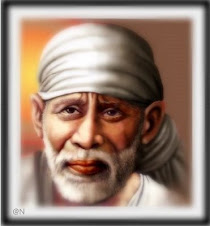

Gurusthan means "place of the guru". It is where Baba spent most of his time when he first came to Shirdi, and also where, according to Baba, the tomb of his own guru is located, by the neem tree. Gurusthan is therefore one of the most important places in Shirdi. Once when some villagers were digging the foundations for Sathe Wada just behind the neem tree, they came across some bricks in the soil and what looked like the opening of a tunnel. Uncertain whether to proceed or not, they asked Baba what they should do. He told them that this was the site of the tombs of his ancestors and that it would be better not to disturb them.
There are several ref-erences to Baba's guru recorded in the literature, but they are somewhat enigmatic, and it is not clear whether he was referring to a guru in his present lifetime, or a previous one.
-- Sri Sai Baba
We have already seen (in the Foreword) the importance that mahatmas give to staying at the place and tombs of saints. In accord-ance with this principle Baba made Shirdi his base because it was the place of his guru. To really grasp the significance of the gurusthan in this tradition, we should understand the importance of the guru. Sai Baba has told us that learning and scriptural knowledge are not necessary, but rather, "Trust in the guru fully. That is the only sadhana." A reading of his life and teachings helps to inculcate this trust and shows us that Baba's life was itself the epitome of this central truth. As B. V. Narasimhaswami has commented, "Baba's biography is the practical illustration of what guru and sishya mean, and of the principles that govern their mutual relation."
Perhaps the first thing that catches our eye at Gurusthan is the huge neem tree. This tree gave shelter to Baba for a few years when he stayed beneath it. Neem has many medicinal properties, though its leaves are notoriously bitter. However, some people once reported that the leaves of one of the branches tasted sweet. For them this was a sign of Baba's grace; others see it as evidence of the tree's exceptional sanctity.
One anecdote concerning the neem tree illustrates how practical and down-to-earth Baba could be. In the early 1900s, after Baba had moved to the mosque, construction work on Sathe Wada was hampered by a long branch of the tree. However, nobody wanted to remove it as this tree had been sanctified by Baba's stay under it. When Baba was approached for his advice he told the villagers, "Cut off however much is interfering with the construction. Even if it is our own foetus which is lying across the womb, we must cut it!" But despite this clear instruction from Baba, none dared meddle with the tree. Eventually Baba himself climbed up and lopped off the branch.
Another reason for the villagers' reluctance to prune the tree may have been that some time previously a boy had climbed the tree to trim it, and had fallen to the ground and died. At that moment Baba, who was in the mosque, sounded a note of distress, blowing sanka (the sound a conch shell makes when blown into) with his cupped hands. Baba sometimes did this when a person was in great danger, although he could not have "seen" from the mosque what was occurring at Gurusthan. Villagers linked the boy's death with his attempt to cut the tree, and became afraid to do anything that might have been a sacrilege.
Today at Gurusthan, in addition to the neem tree, there is a pair of marble padukas on a pedestal, a Shivalingam and a statue of Baba. The statue, carved by the grandson of the sculptor of the Samadhi Mandir statue, was donated by Y. D. Dave and installed in 1974; the other items were set up in Baba's time.
BOW TO SHRI SAI - PEACE BE TO ALL







Om Sai Ram..! :)
ReplyDelete